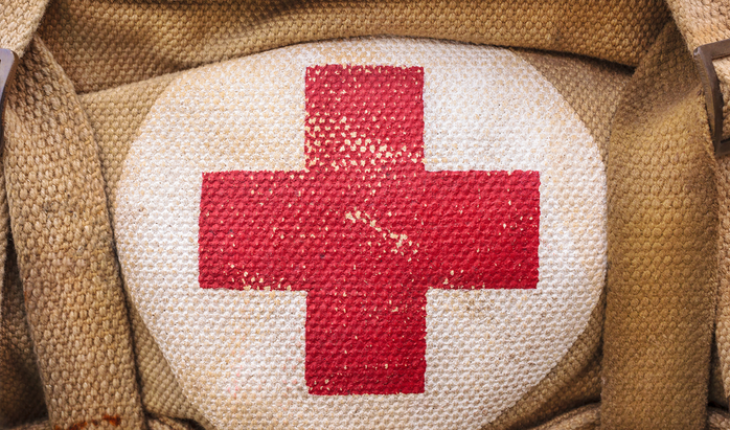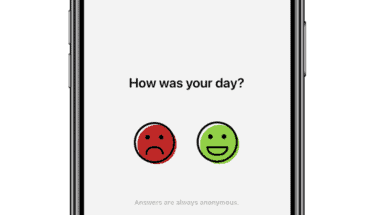Would you know what to do if you were first on the scene of a terrorist outrage where dozens of people were injured and dying? ‘There is a well known phenomenon called the ‘bystander effect’, where everyone does nothing because they assume someone else knows what to do,’ says Joe Mulligan, head of First Aid education at the British Red Cross. ‘Don’t fall for that. Call the emergency services and do something to help.’ All the research we have done shows that the first people on the scene are absolutely crucial to the outcome for the victim.
Get your priorities right
Don’t put yourself in danger. ‘The very first thing you need to do in the aftermath of a terrorist attack is check for further danger to yourself and others around you,’ says Emma Hammett, a former A&E nurse, first aid trainer, and founder of First Aid for Life.
Concentrate on the quiet ones
‘People who are injured and making a lot of noise clearly have their airways open. It is the quiet ones who can be slowly slipping away because they are not breathing. To check for breathing, ensure that the airway is open by tilting back the head and lifting the chin. Spit on the back of your hand and put it close to the victim’s mouth. It will feel cool when breath is expelled. Someone should be breathing at least twice in a 10 second period. Don’t assume that agonal breathing (the death rattle) is normal breathing. This can be a sign that death is imminent. If someone is not breathing, start CPR.
Remember that first aid is a humanitarian act
‘Cradling injured victims and comforting them is a very important part of first aid – connecting to the injured person,’ explains Joe Mulligan of the British Red Cross. ‘Reassurance has been shown to be beneficial and improves a person’s chances because stress levels decrease. It calms the person and it also gives the first aider valuable thinking time to assess the situation and decide what to do next. Trust yourself and don’t be afraid to show compassion.’
What about the children?
Sadly, small children have less blood volume and therefore can bleed to death more quickly than adults. They also have smaller lung capacity so damage to lungs can be more deadly. According to Alan Weir, Clinical Director at St John Ambulance, children over the age of five should have the same first aid as given to adults, with adjustments for size. ‘It’s a question of scale. Obviously, CPR on a child under five should involve administering pressure to the chest with one hand rather than two. Breaths can be shallower so as not to over-inflate the lungs.
Giving CPR to babies is a much more delicate procedure, with just two fingers used to apply regular pressure to the chest and the whole mouth and nose are covered with the first aider’s mouth who gives small breaths at regular intervals.
Stab wounds and bullet wounds
If the victim is unresponsive and not breathing, lie him on his back and make sure that airway is open by tilting back the head and pushing up the chin. Start performing CPR. If the victim is unresponsive and breathing, roll them gently into the recovery position. ‘Make sure that they are lying on the injured side. This will prevent blood and fluid entering the uppermost lung which is protected by gravity,’ explains Emma Hammett, founder of First Aid for Life.
If the victim is still standing, get them to sit or lie down. ‘If the victim is still upright and moving around, they could collapse at any time due to blood loss, causing further injury,’ explains Emma Hammett. ‘Don’t remove clothing because they will go into shock due to blood loss and could develop hypothermia. Instead, cut or tear clothes so you can see the wounds. Apply pressure to the wounds using your hands or packing material like a scarf or T-shirt.
Keep the victim warm and as calm as possible to prevent shock developing. Do not give anything by mouth, even if he or she says she is thirsty since they will almost certainly undergo emergency surgery in hospital. Allan Weir, clinical director of St John Ambulance, points out that bleeding may not be obvious since it may all be internal. ‘Be aware that a small puncture wound might be the only sign that the liver has been dissected or a major artery has been cut through and the patient is bleeding to death.’
To tourniquet or not to tourniquet?
It might seem like a good idea to tie a tight ligature around a bleeding limb but there is evidence that wrongly using a makeshift tourniquet can make blood loss worse. ‘It should only be used in a small number of cases where bleeding is catastrophic, and if direct pressure is not working,’ says Emma Hammett.
First aid at work courses already include an option on how to correctly use a tourniquet, but even this is controversial. The recommendations remain that heavy bleeding should be treated first with direct pressure and packing the wound or using a tourniquet are second line treatments when direct pressure is insufficient or impossible.
Shrapnel wounds and burns
Exploding bombs in a confined space can lead to shrapnel injuries and serious burns, both of which can be life threatening. Joe Mulligan cautions against trying to remove sharp objects embedded in flesh. ‘They might be blocking a major artery so if you remove then, you could have catastrophic bleeding.
Burns should be treated by being doused in cold fluids or bottled water. ‘It doesn’t have to be cold water. It can be cold beer or lemonade from the pub,’ says Mulligan. ‘Use your common sense. Never try and remove burnt on clothing however at the scene as this can cause further injury. Leave that to the medical professionals.’
Broken bones and dislocations
Broken bones can be very painful but they are rarely life threatening. In the six minutes before paramedics arrive, amateur first aiders should concentrate on other things, says Emma Hammett of First Aid for Life.
Alan Weir, clinical director of St John Ambulance says that if the emergency happens in a more remote location, it can sometimes be useful to straighten twisted limbs to restore blood circulation. ‘This will be very painful for the patient who may resist this strongly but it may help prevent longer-term damage to tissue and limbs.’
Dislocations can look terrible and cause a lot of pain, but again, it is not advisable to try and restore displaced bones into the proper place. ‘Doctors use X-rays to guide them when they reset dislocations so they don’t trap blood vessels of nerves. Instead, just make the patient as comfortable as possible until help arrives,’ says Alan Weir.
Head injuries
The first concern is to check that a patient is breathing. If not, ensure that the airway is open and start CPR. Head injuries can seem relatively minor and rapidly worsen. ‘Someone might be conscious to start with an rapidly lose consciousness,’ explains Alan Weir of St John Ambulance. ‘If they appear dazed and confused, they could be suffering from a brain injury. ‘Get them to sit down and stay calm until help arrives,’ he says.
Spine injuries
If someone has a suspected spine injury, move them as little as possible. ‘This is to avoid causing any further damage to the delicate spinal cord,’ explains Emma Hammett. ‘Cradling someone’s head is an instinctive thing to do but it definitely not a good idea if you suspect a spine injury or a neck injury,’ advises Alan Weir of St John Ambulance. If you have to move the patient, ask other people to help you log roll him or her into a safer place.
Heart attack
If the victim is not breathing and unresponsive, check that their airway is clear and start CPR. You can also look for a pulse. You can check a person’s pulse by putting two fingers on the inside of their write or on their neck. Using your watch, count how many beats you feel in 30 seconds and multiply it by two.
A normal pulse rate is between 60-100 beats per minute. Joe Mulligan from the British Red Cross says that chest compressions on their own (hands-only CPR) can be sufficient for a short period before paramedics arrive. ‘Chest compressions are the most important part of CPR for periods of around 6 minutes. Evidence shows that it can be more effective than attempting to do both and not doing either properly. ‘You are buying the victim time by artificially pumping blood around the body and you may not see any discernible improvement in that time.’ He says that giving chest compressions, at a rate of 100 to 120 a minute, is something everyone can do.
If someone is unresponsive and breathing, move them into the recovery position on their side and keep them warm until help arrives. If you have blankets to hand, use these, otherwise use coats, jumpers and anything else that comes to hand.
Crush injuries and falls
People who have been crushed by speeding vehicles or by falling masonry are likely to have internal injuries ranging from burst spleens to torn arteries, broken bones and tissue damage. ‘Follow the 15 minute rule,’ advises Emma Hammett. ‘If you can get someone out of a situation where they are crushed, then try it. If they have been crushed for longer than 15 minutes, leave them where they are. Removing them can suddenly release a flood of toxins which build up in crushed limbs and then travel freely throughout the body, causing toxic shock.
Loss of fluid may make someone with crush injuries thirsty but it is never a good idea to give anyone food or drink who may need to undergo emergency surgery,’ explains Alan Weir. If a crush victim is unresponsive and not breathing, attempt CPR if possible where they are. Treat obvious signs of external bleeding by applying direct pressure to the wound site.
Unfortunately, people who fall from heights often do land head first. ‘The head is the heaviest part of the body and this is the position it assumes as it falls through the air,’ explains Alan Weir. ‘Expect to see head and spinal injuries. It may be necessary to try and resuscitate them if they are unconscious and not breathing. Minimise movement unless absolutely necessary.’
- Gut microbiome could delay onset of type 1 diabetes - 3rd April 2025
- The da Vinci 5 Robot Is Set To Transform Bariatric Care: - 31st March 2025
- Beyond money: the hidden drivers fuelling child food insecurity - 31st March 2025






